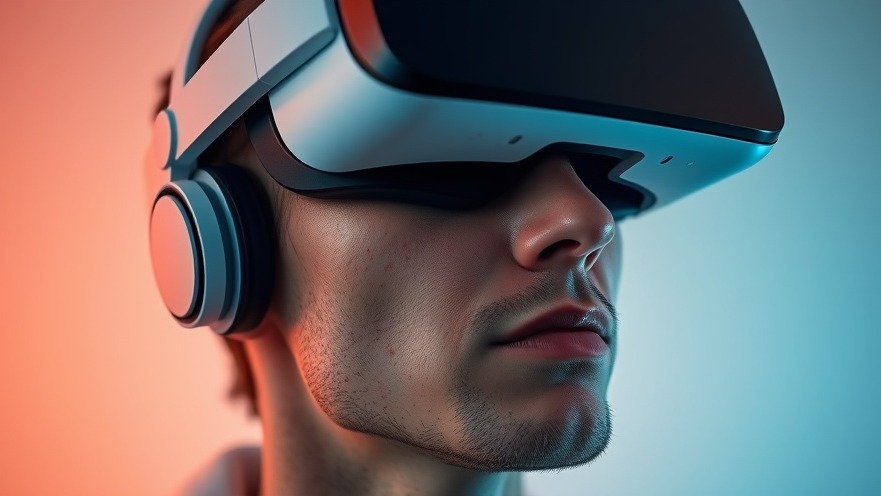
Revolutionizing Balance Rehabilitation: The Role of VR Gaming
In a world where traditional rehabilitation techniques often seem monotonous and tedious, researchers at the University of Queensland are pioneering a novel approach that may disrupt the conventional rehabilitation framework. By integrating virtual reality (VR) gaming into balance rehabilitation programs, they are exploring a more engaging and effective solution that could benefit numerous patients, especially the elderly and those recovering from strokes.
A Fun and Engaging Alternative
Despite the proven effectiveness of repetitive exercises in regaining balance, many patients discontinue their rehabilitation programs due to boredom. Enter Achintha Abayasiri, a Ph.D. scholar at the University of Queensland, whose research focuses on the potential of VR gaming to enhance traditional rehabilitation methods. Abayasiri's studies reveal that VR games, such as table tennis, not only capture participants' interest but also provide substantial advantages over standard exercises. The immersive nature of VR offers a level of engagement that can motivate patients to persist in their rehabilitation efforts, ultimately leading to better outcomes.
Measuring Success: Gamified Rehabilitation
To assess the effectiveness of VR gaming, Abayasiri conducted experiments with participants utilizing VR headsets while standing on a stationary treadmill equipped with force plates. This setup measured how well participants maintained their balance while playing a virtual table tennis game. Notably, by deliberately offsetting the racket from the participants’ hands, the game provided a novel challenge that subtly influenced balance without overwhelming the players.
Both younger and older participants embraced this innovative approach. The results were promising, with participants reporting high enjoyment levels and low instances of motion sickness. The inclusion of diverse age groups—those as young as 18 and as seasoned as 84—demonstrates VR's versatility in accommodating various rehabilitation needs. Customizing VR experiences for individual patients may further enhance effectiveness, catering to personal preferences and rehabilitation goals.
Paving the Way for Future VR Interventions
Looking ahead, Abayasiri plans to explore VR's potential in treadmill walking rehabilitation, expanding its application beyond stationary activities. This adaptability suggests that VR gaming can not only distract patients from the demands of physical therapy but also provide a new platform for developing crucial motor skills and balance that are often jeopardized by age or illness.
The Broader Implications for Healthcare
The research spearheaded by Abayasiri and his team opens notable discussions regarding the future of rehabilitation practices in healthcare settings. Dr. Nilufar (Nell) Baghaei, Abayasiri's supervisor, observes that the integration of immersive technologies in rehabilitation could fundamentally enhance treatment protocols and patient adherence. Given that traditional methods often require significant therapist time and patient commitment, AI-enhanced VR solutions can both streamline these processes and improve patient experience, creating profound cost and time efficiencies in clinical environments.
The Importance of Individualized Care
For concierge health practitioners, the findings of this research hold vital implications. As healthcare increasingly shifts towards personalized care, practitioners are encouraged to consider how VR technology could fit into their patients’ rehabilitation plans. Ensuring that rehabilitation programs are customizable to individual needs—especially using engaging modalities like VR—can significantly enhance recovery outcomes while also retaining patient interest.
Next Steps in VR Rehabilitation Research
While the potential for VR in rehabilitation is exhilarating, further research is needed to fully understand its capabilities and limitations. Future studies should aim to evaluate long-term effects of VR gaming on balance recovery and assess how these interventions can be optimally integrated into existing healthcare frameworks. This exploration is critical as the demand for effective rehabilitation methods becomes increasingly pronounced in our aging population.
Why This Matters to You
As a health practitioner, embracing innovative rehabilitation techniques could position you as a leader in patient care. Understanding the integration of VR into therapy not only enhances your clinical repertoire but also addresses patient engagement—a cornerstone of successful rehabilitation. By familiarizing yourself with advancements in VR technology, you’ll be better prepared to deliver superior care to your patients while enhancing your practice’s reputation.
In conclusion, the preliminary findings from the University of Queensland highlight an exciting development in rehabilitation strategies through VR gaming. As the landscape of healthcare continues to evolve, practitioners have an opportunity to leverage these insights to improve patient outcomes and satisfaction.
 Add Row
Add Row  Add
Add 






Write A Comment